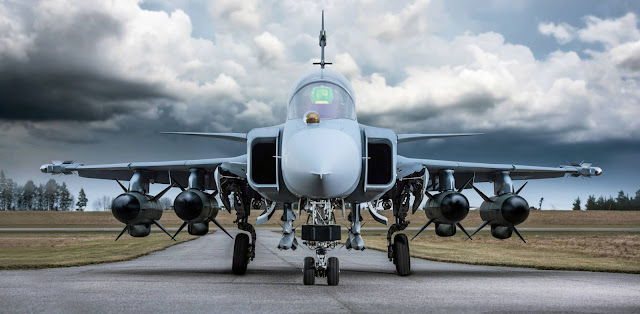GAO F-35 Report: It's bad.
The United States Government Accountability Office (GAO) released its report on the F-35 Lightning II Joint Strike Fighter earlier this week, and the results were fairly predictable to anyone who has been paying attention to the program in the last few years.
The report can be found here.
The general gist of it? The F-35 is going to be late, and it's going to take a lot more money. The very first page states, in big letters:
It's not all bad, however. The report actually praises the "flight sciences" aspect of testing, meaning that the aircraft is meeting most of the goals associated with hardware, like taking off, flying, dropping bombs, and landing.Problems Completing Software Testing May Hinder Delivery of Expected Warfighting Capabilities
The program accomplished nearly all of the flight sciences testing, including weapons testing, it had planned for 2013.Progress has been made on the troublesome tail hook, the STOVL system seems to work well, and the aircraft has no issues with high angle-of-attack flight. Bulkhead cracks in the F-35B are still an issue, with questions regarding to how long, and how expensive they will be to fix.
Where the F-35 runs into trouble, however, is software.
 |
| Ctrl+Alt+Delete. |
The JSF's finicky ALIS (autonomic logistics information system) is prone to errors, and worst still, impossible to override. Technicians are having go out of their way to find work arounds, adding time and money to the maintenance bill.
The F-35's fancy helmet mounted display is showing improvement, but it still has issues with its night vision camera.
The "Block 2B" software, required to enable initial operational capability (IOC) for the USMC, is "behind schedule and will likely delay the delivery of expected warfighting capabilities." As of January, 27% of the software was to be verified, only 13% was ready. This could lead to a possible 13 month delay, pushing it August 2016.
Delays in getting the software right will lead to the need for additional testing. Additional testing means higher costs and slower production.
Not that the JSF needs the additional costs.
The report states that: "Program funding projections and unit cost targets may not be achievable". At its current rate, the JSF acquisition program will require $12.6 billion per year, every year until 2037. This gobbles up ¼ of the Pentagon's procurement budget. The sustainment cost exceeds $1 trillion (triple that originally planned). Both figures are completely unaffordable in the current fiscal climate. It would also severely jeopardize other large scale projects, like the KC-46 tanker and the Next Generation Bomber.
GAO does state that F-35 unit costs have come down since initial production started, but the price still needs to drop. "Anywhere from $41 million to $49 million in unit costs reductions". While the F-35A and F-35C dropped in unit price, the STOVL F-35B actually increased in price by nearly $10 million.
As for its long term costs, both the F-35A and F-35B were unable to meet reliability targets. If this persists, maintenance costs will increase further, or flying hours will need to be cut.
The software is buggy, and the aircraft is unaffordable as things currently stand.
The GAO Report's recommendation?
That means it is time to have a cold hard look at the F-35. The software troubles need to be fixed, and the costs need to come down. Soon.Due to the uncertainty surrounding the delivery of F-35 software capabilities, we recommend that the Secretary of Defense conduct an assessment of the specific capabilities that realistically can be delivered and those that will not likely be delivered to each of the services by their established initial operational capability dates.
If not, the F-35 could very well be doing the Zombie Shuffle.




